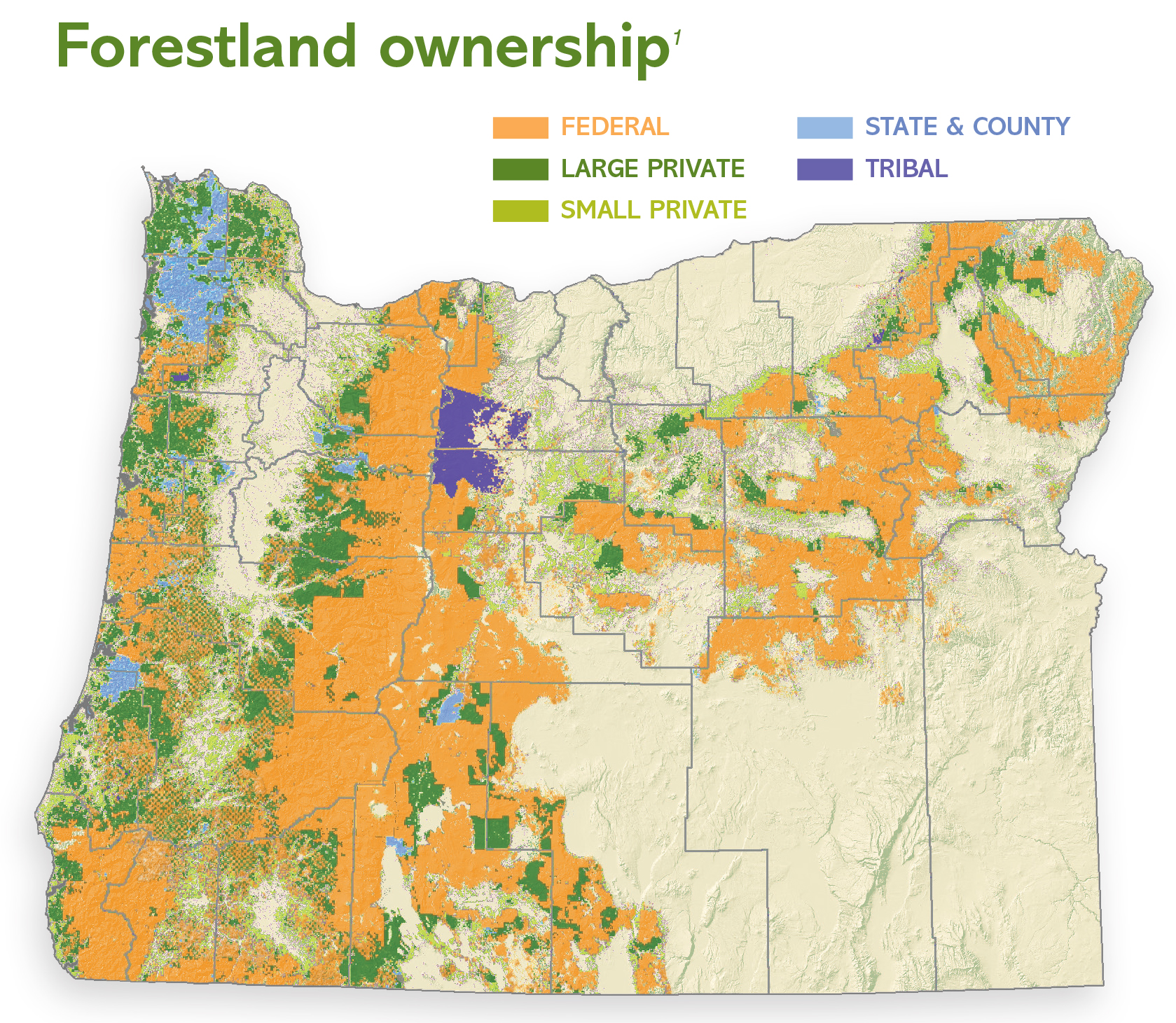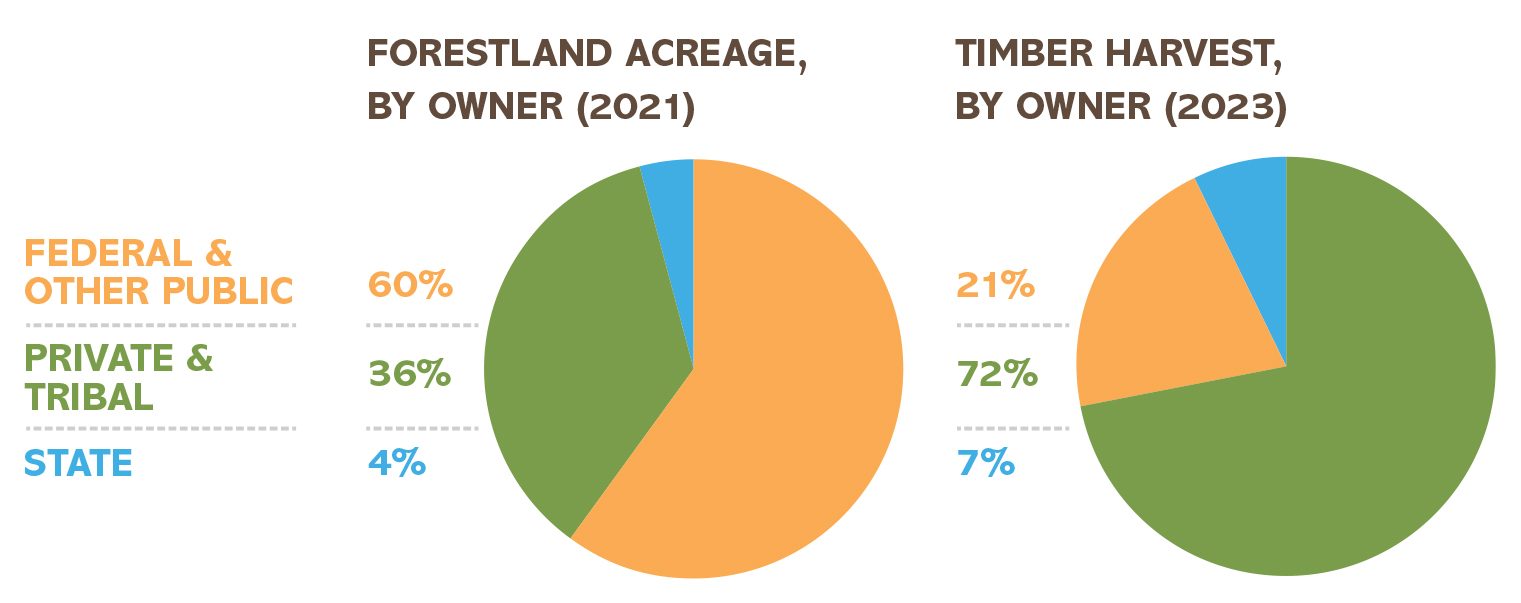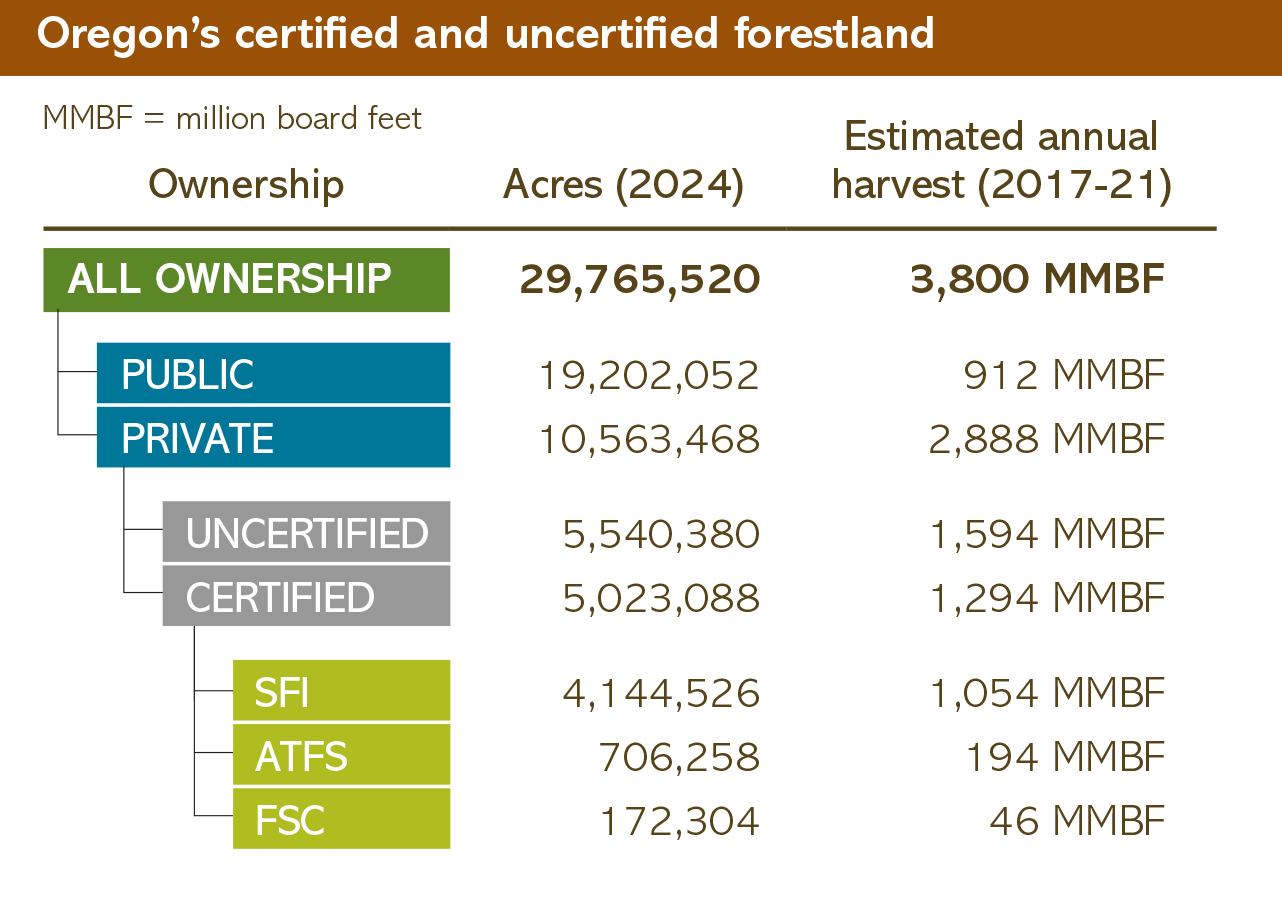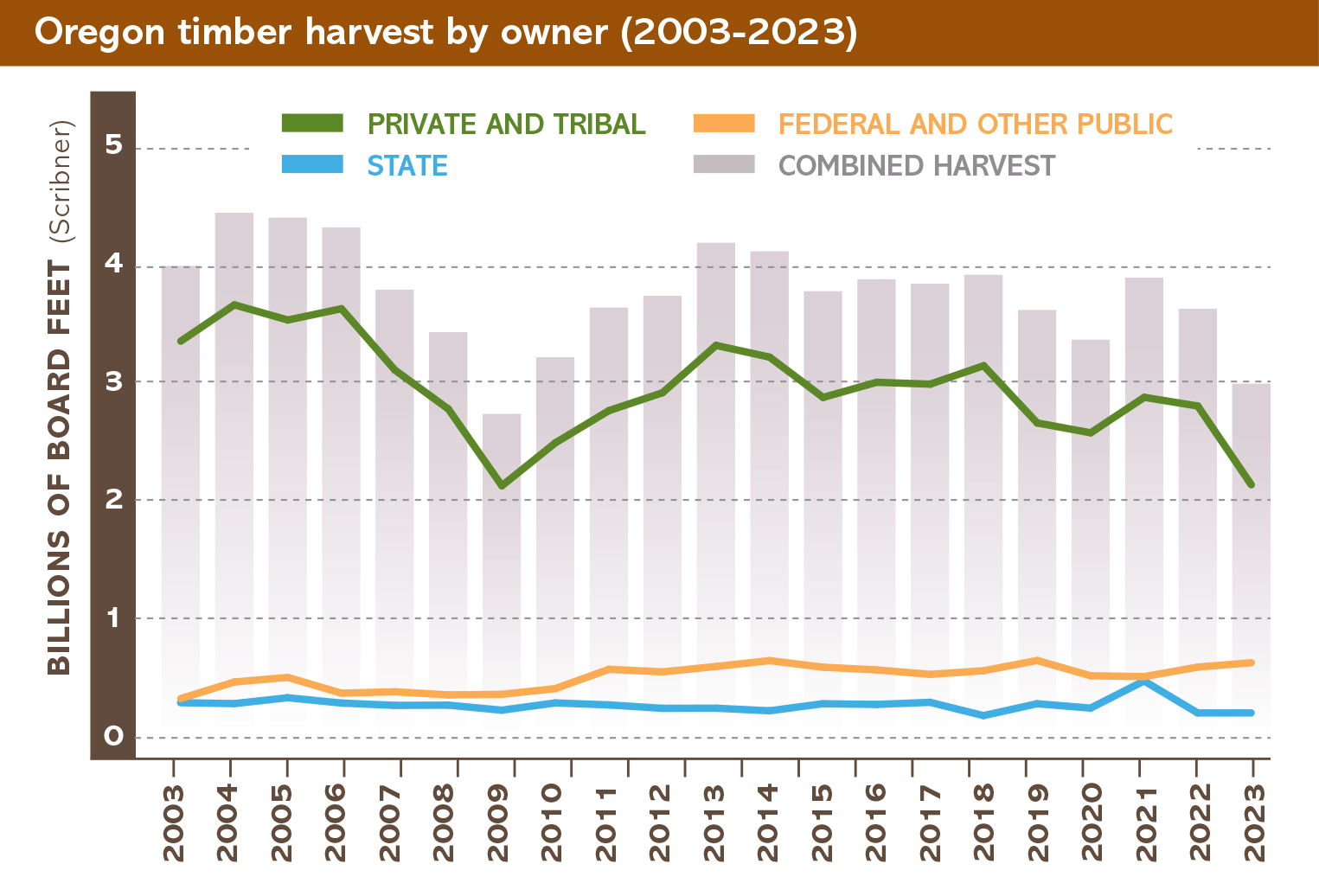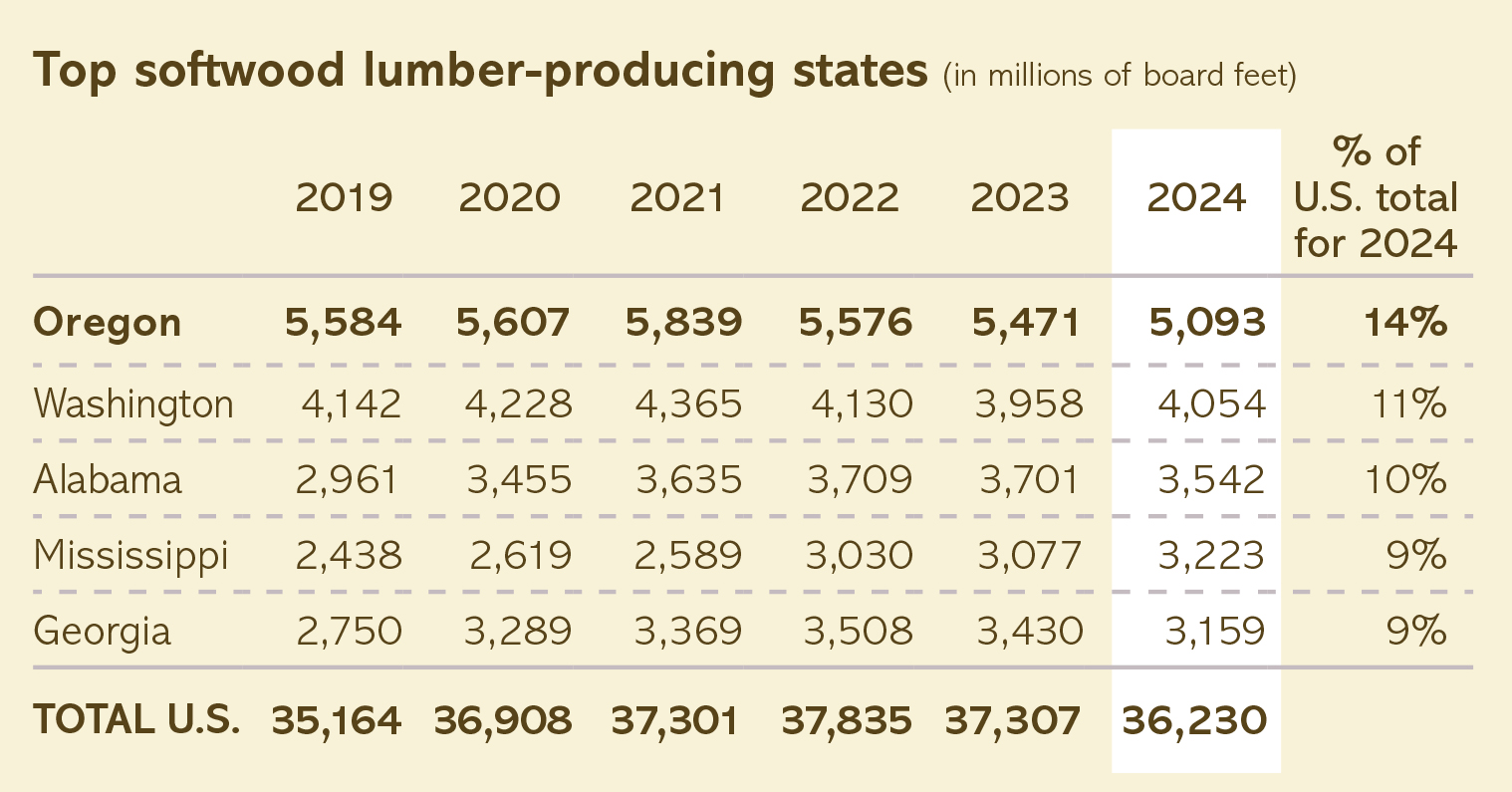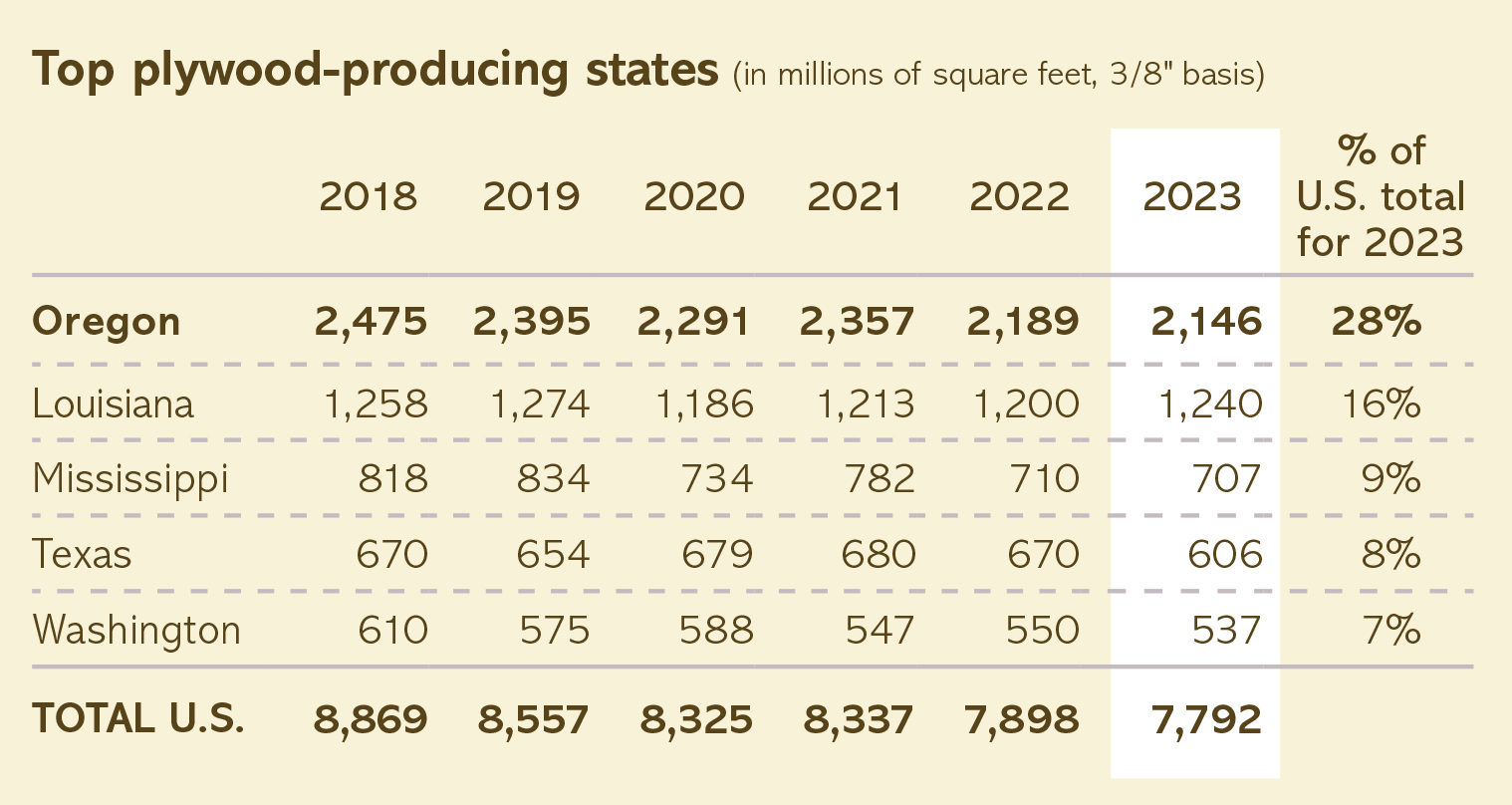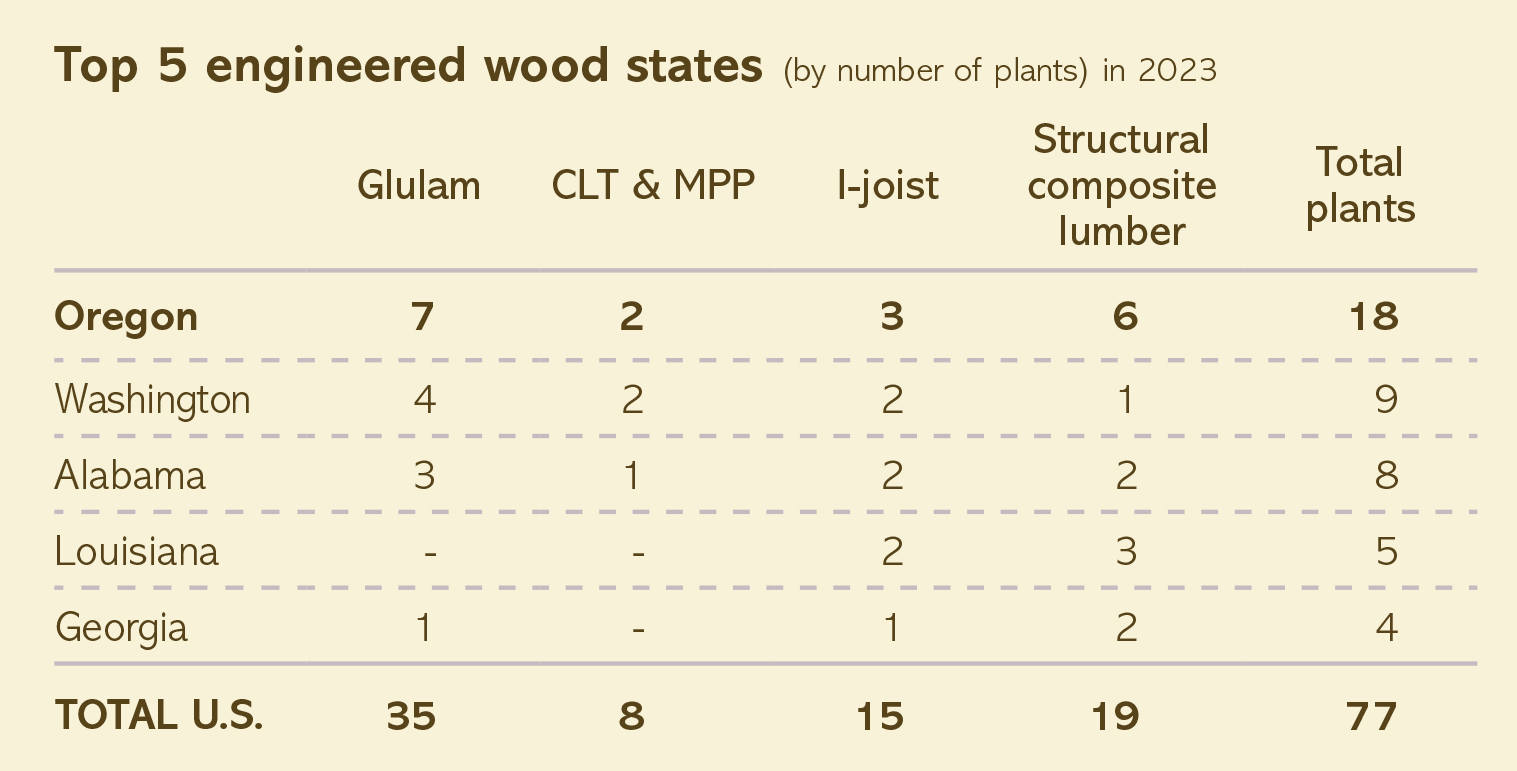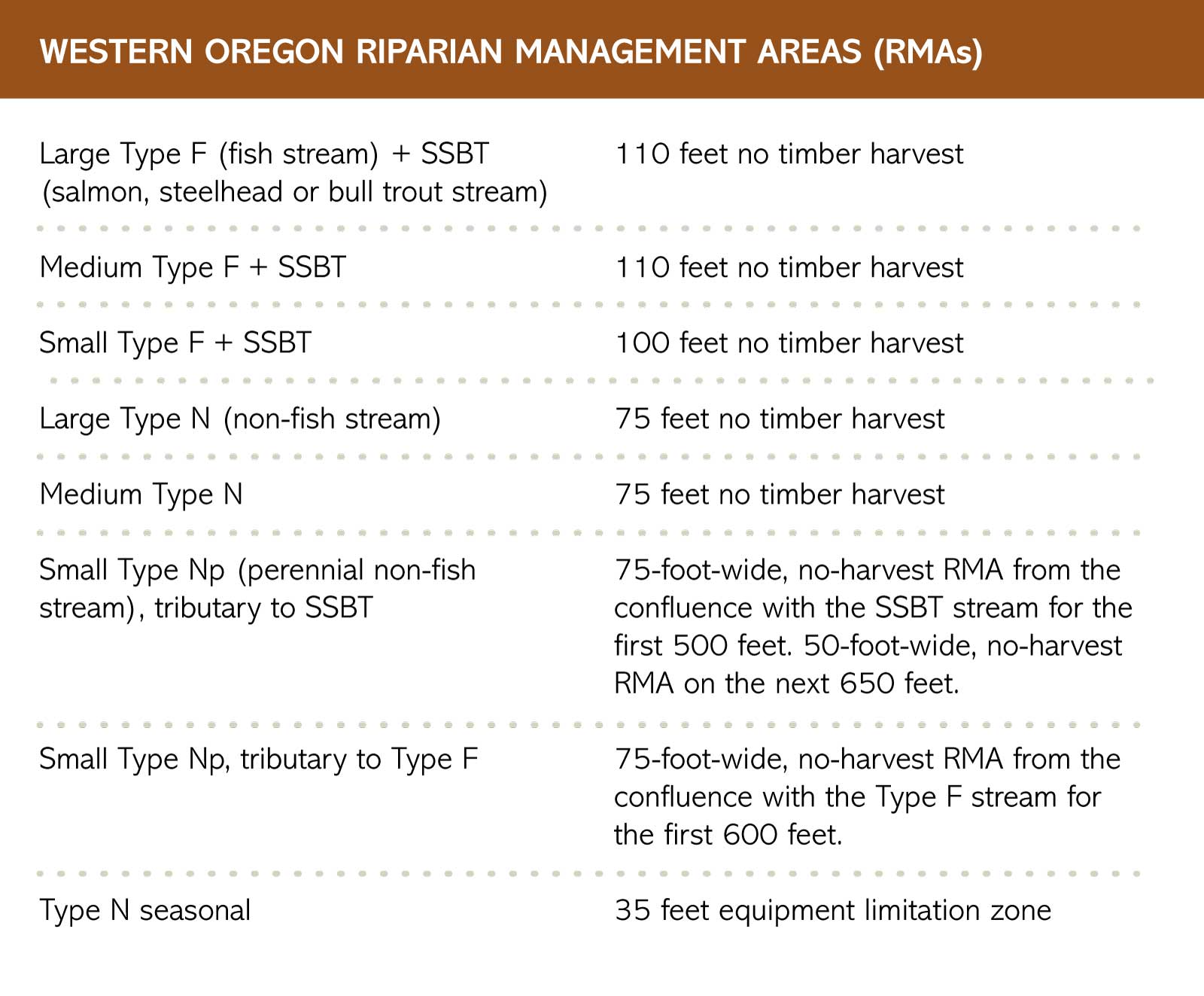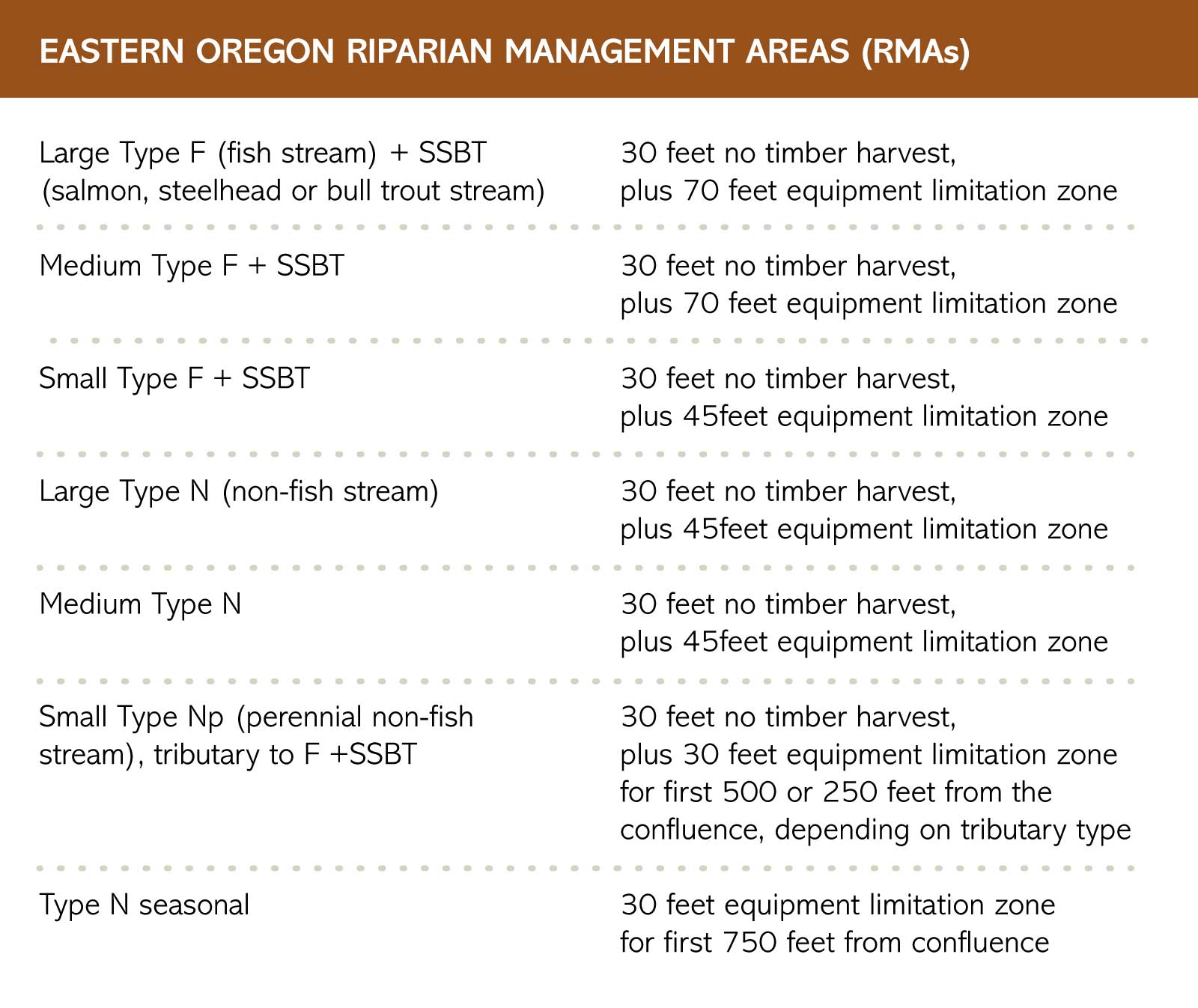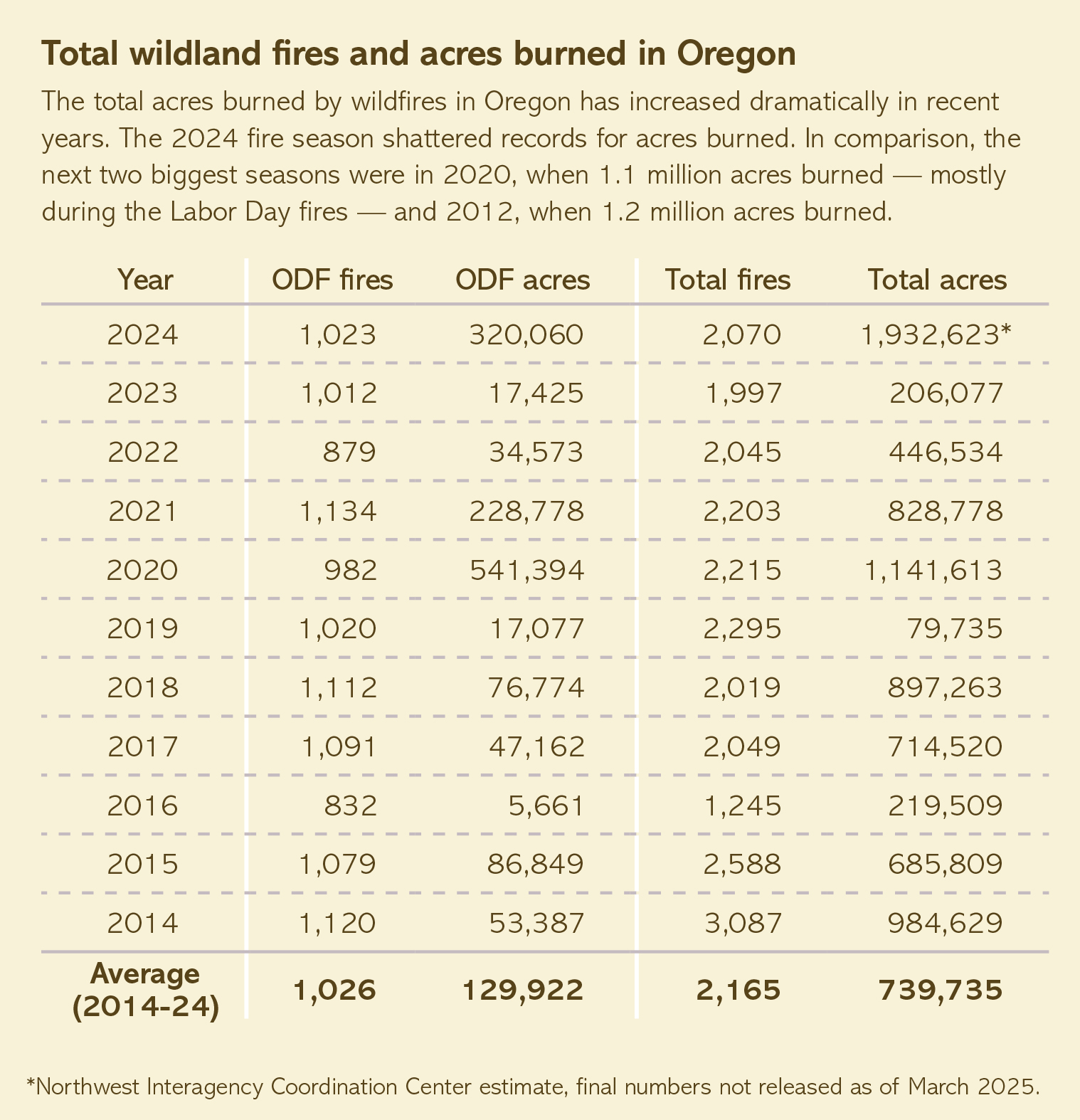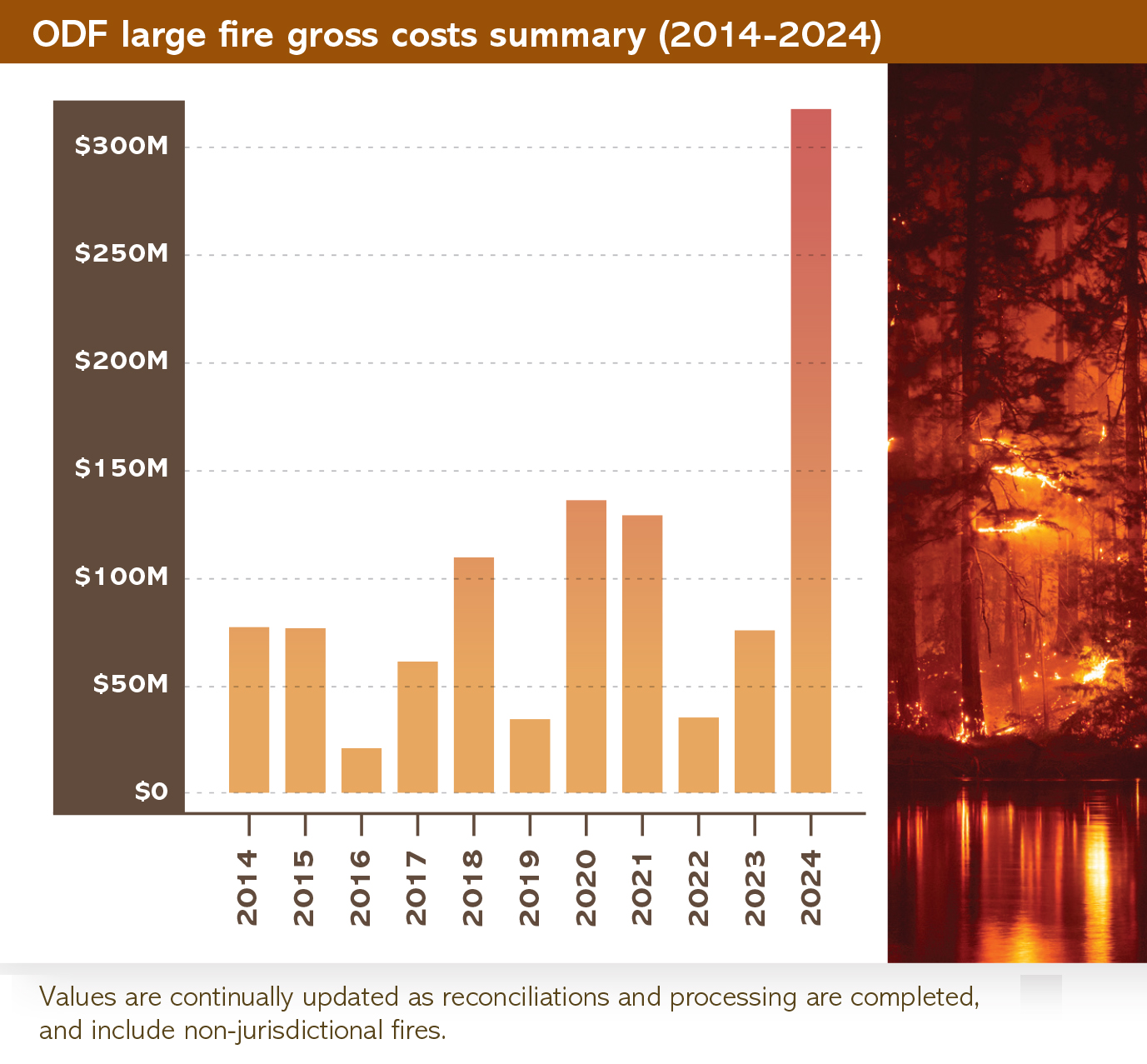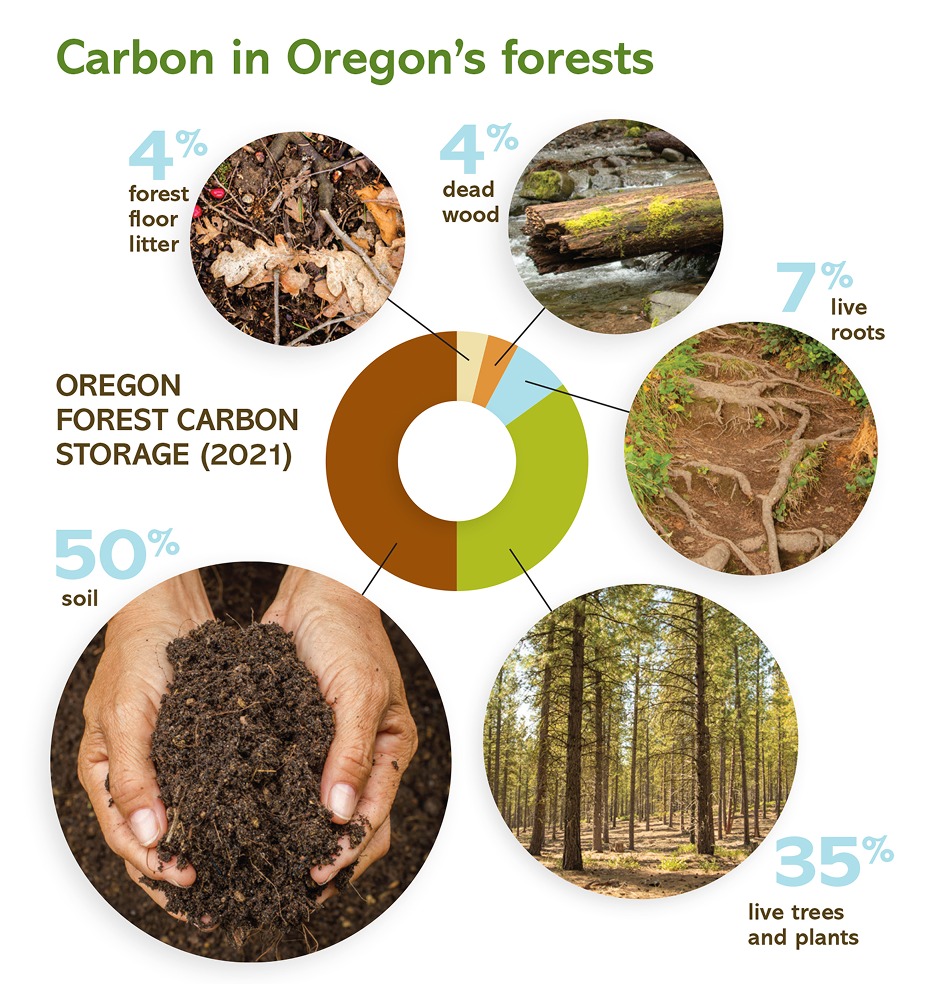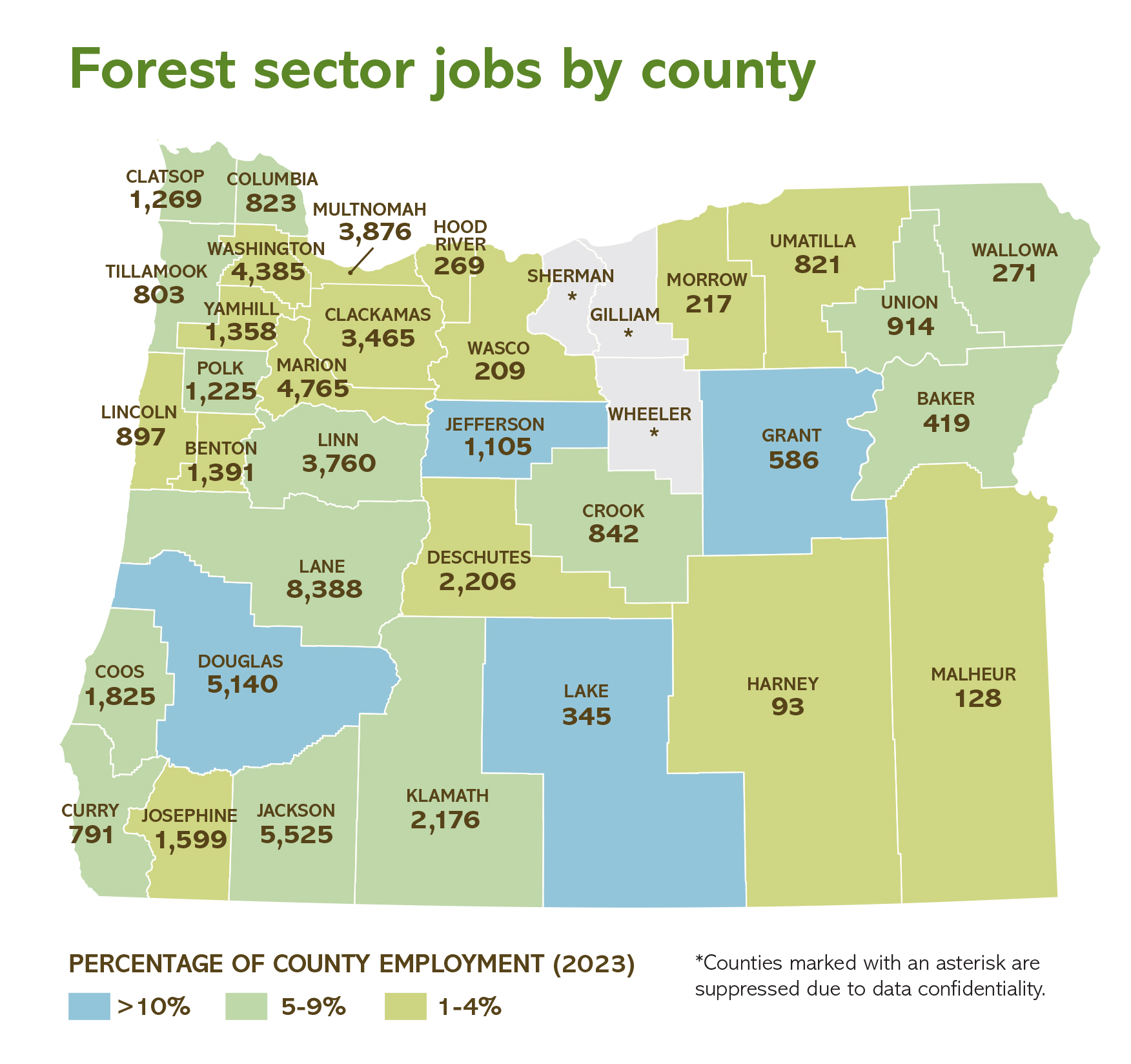Employment
FOREST SECTOR WORKFORCE
Oregon’s forest sector includes a wide variety of employment, from forestry, logging, millwork and cabinetmaking to engineering, hydrology, business management and academic research. Here’s a rundown of Oregon’s forest sector jobs in 2023, by type of employment.
CAREERS IN THE FOREST SECTOR
Tens of thousands of Oregonians are employed across a variety of forest-related jobs. (For a complete breakdown of the job figures, see page 14.) These forest professionals help care for our forests, conserve fish and wildlife habitat, protect water, sustain forests for future generations, and make innovative forest products.
About 3% of Oregon jobs are part of what is known as the “forest sector.” The sector encompasses a diverse array of careers that include firefighters, ecologists, foresters, wildlife and fish biologists, and more.
Forest sector jobs pay relatively well, with an annual average wage of $71,900. These jobs are especially important in Oregon’s rural counties, where forest sector employment accounts for 6% of all rural employment, compared with 2% of all metro area employment. (For more information about the number of forest sector jobs by county and wages, see page 15.)
Like other industries, Oregon’s forest sector has been affected in recent years by a statewide labor shortage. The forest sector is looking at several opportunities to improve the forestry workforce, such as by providing forest operator training programs.

